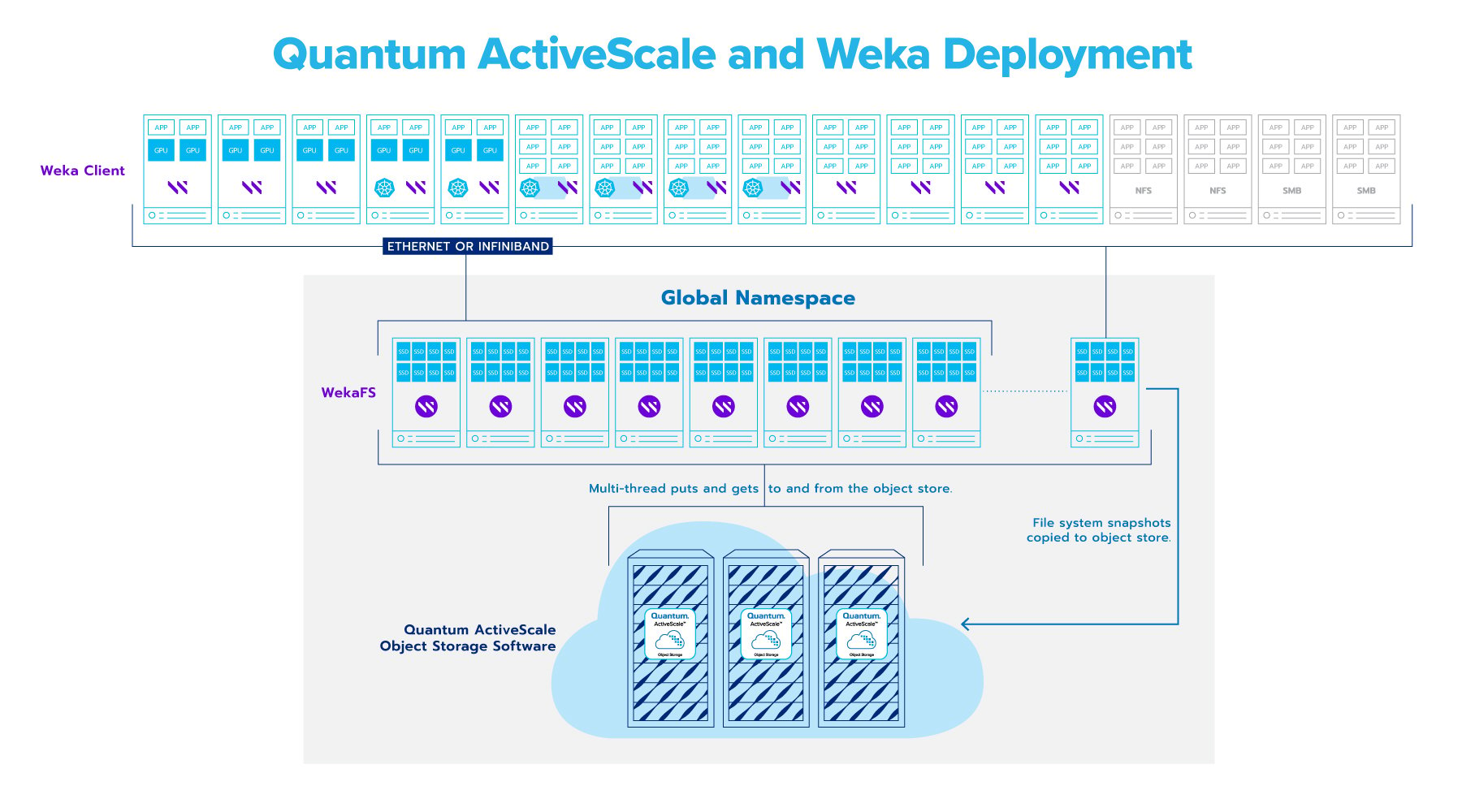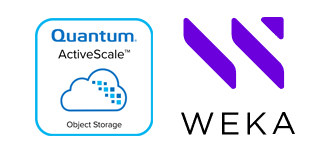Quantum ActiveScale and the Weka File System
Efficiently Manage and Protect Your Data-Intensive Workloads
Workloads like AI, machine learning, high-performance analytics, and life sciences research are creating massive data sets that require high performance, low latency, and massive scale. Traditional scale-out NAS systems simply can’t handle massive parallel processing needs and are often bottlenecks to productivity, which can directly impact your business as research results and insights take longer. Protecting and preserving this data using traditional methods can also be costly and lead to the risk of ‘data silos.’
Achieve Optimal Performance with an Integrated Solution
Quantum’s ActiveScale™ object storage and the Weka file system provide an integrated solution for accelerating your data pipeline, lowering research costs, and keeping data protected and secure. The components of this solution include:
ActiveScale Object Storage: Quantum ActiveScale object storage serves as the object store data lake to provide massive-scale storage for billions of files and hundreds of PBs at the highest levels of data durability. ActiveScale’s unique data placement technology provides performance between the Weka file system and the object store data lake, while ActiveScale’s predictive data repair capability ensures the system is always available. With ActiveScale proactive monitoring and repair, a single administrator can easily manage a 100+ petabyte archive, reducing operational expenses significantly.
Weka File System: The Weka file system is a high-bandwidth, low-latency file system for intensive workloads. It outperforms traditional scale-out NAS systems and has been designed specifically for workloads in AI/analytics, life sciences, and financial services analytics.
The Weka file system includes an integrated cloud tiering function, tightly integrated with the ActiveScale object store optimized for performance. ActiveScale object storage acts as a low cost, protected expansion of the file system namespace. Additionally, the file system snapshots can be copied to the object store for data protection.




